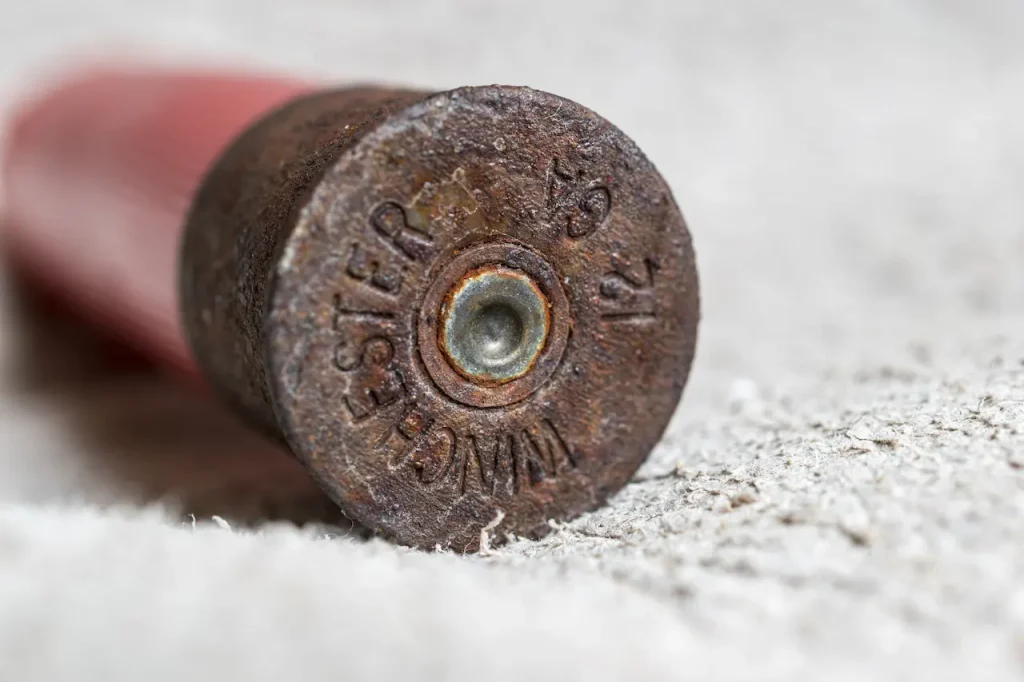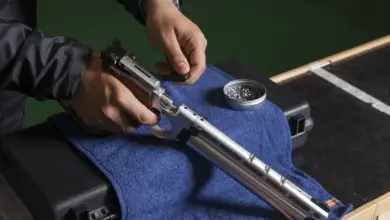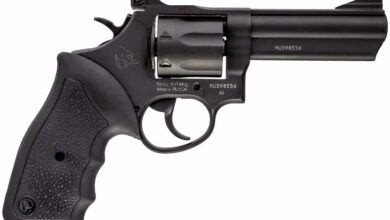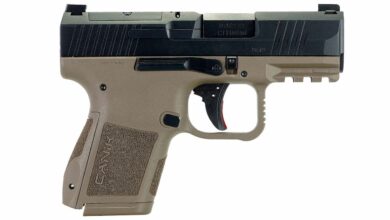The Best Winchester Rifles And Shotguns
The Best Winchester Rifles And Shotguns Ever Made
Winchester… there are few names in the world of firearms more iconic. Manufacturing guns since 1866, Oliver Winchester’s concern has grown with the country and played a vital role in its history. Few other companies are as deeply entwined in the fabric of America than Winchester. After all, it produced “The Gun that Won the West” (the Winchester 1873, incidentally) and manufactured some of the most storied firearms of all time. There was a spell in its history where nearly everything that rolled off its lines was arguably an all-time classic. Given this, it’s difficult to winnow down the best of the best. But we’ll give it a crack below with the greatest Winchesters ever created.
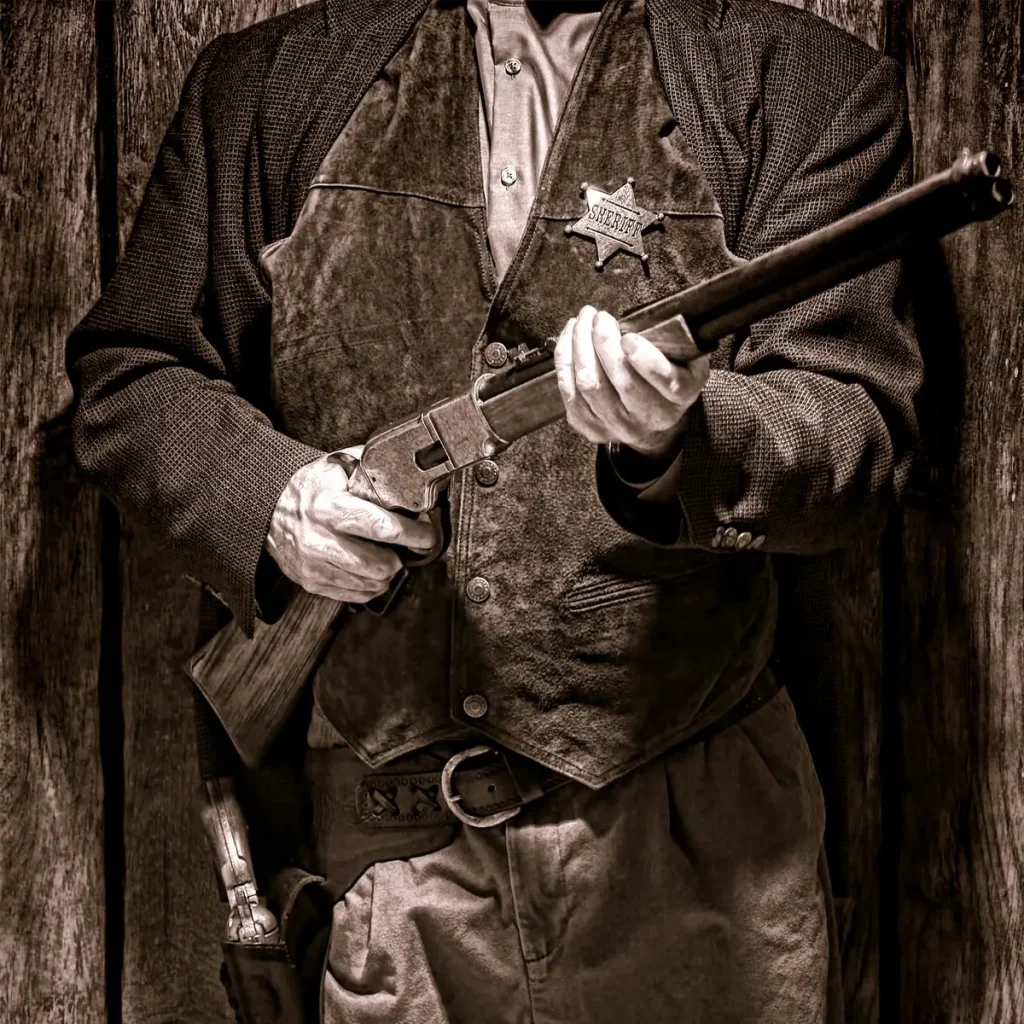
The List
Winchester Model 70 – The Legendary Bolt-Action Rifle
Among Winchester’s stellar lineup, one name consistently rises to the top: the Winchester Model 70. Dubbed the “Rifleman’s Rifle,” it has earned a reputation as one of the finest bolt-action rifles ever made. Introduced in 1936, it quickly became renowned for its accuracy, reliability, and elegant design.
The Model 70 boasts a controlled round feed mechanism, a crisp and adjustable trigger, and exceptional craftsmanship. Whether you’re a hunter, target shooter, or collector, the Winchester Model 70 is a symbol of precision and excellence. Its heritage is deeply rooted in American firearms history, and it continues to be celebrated as a paragon of quality in the world of rifles. When you hold a Model 70, you’re holding a piece of Winchester’s legacy, a rifle that has stood the test of time and remains a pinnacle of firearms craftsmanship.
Winchester Model 94
In November 1894, Winchester introduced its new Model 94 lever-action rifle with the following prophetic words: “We believe that no repeating rifle system ever made will appeal to the eye and understanding of the rifleman as this will and that use will continue to warrant first impressions.” Winchester’s new rifle quickly became the preferred firearm of Western settlers, prospectors, law enforcement officers, hunters and ranchers who appreciated its power, reliability, light weight and compact dimensions.
Today, more than 100 years and 5,500,000 rifles later, the Winchester Model 94 remains a bestseller for those same reasons. Like so many other successful rifles and shotguns, the Winchester Model 94 rifle was designed by John M. Browning who sold his Model 94 patent (No. 524702 of August 1894) to Winchester.
Although similar in appearance to other Winchester rifles, the Model 94 differs in that it was the first repeating rifle designed exclusively for use with smokeless powder. To accommodate the then-new propellant, Winchester Model 94 rifles had high-strength, nickel-steel barrels. Initially, Model 94 rifles were offered in two popular blackpowder chamberings: .32-40 Win. and .38-55 Win.
In the spring of 1895, Winchester introduced two new cartridges that were designed from the beginning for use with smokeless powder: the .25-35 Win. and the now classic .30-30 Win. The combination of power, low recoil and relatively flat trajectory of the .30-30 Win. cartridge revolutionized hunting. The .32 Win. Spl. cartridge chambering was added in 1902. A little more than 83 years would pass before other calibers would be introduced: .44 Mag. in 1984, .45 Colt in 1985, 7-30 Waters in 1989 and .357 Mag. in 1992. By far the greatest number of Model 94 rifles have been made in .30-30 Win.

Winchester Model 12
This pump-action shotgun was produced from 1912 to 1964 and was used by law enforcement, military, and civilian shooters. It has a reputation for being reliable and easy to use, and is still popular among collectors and sporting enthusiasts.
the Winchester Model 12 shotgun was designed by T.C. Johnson and introduced in 1912. Winchester had enough confidence in it to market it as “The Perfect Repeater,” and time would validate that claim. It has an internal hammer design and was the first truly successful pump-action shotgun with that feature. Nearly two million were manufactured over the gun’s 52-year run.
Because 20-gauge shotshells are far more common and much less expensive, 20-gauge Model 12s are probably the most popular among those who want to actually hunt with their guns and, as a result, are fairly expensive on the used-gun market. Blessedly, versions in 16 gauge are the opposite.
First-year guns were all 20 gauge. In 1913 16- and 12-gauge versions were added, and the latter required a much larger frame size. Although 12-gauge versions are considerably bulkier and heavier, they proved to be outstanding waterfowl guns. Some 20 years later, a 28-gauge version was added, and it’s certainly the rarest Model 12.
Of all the bore sizes, the 16 gauge boasted the best combination of authority paired with easy carry and handling characteristics. Importantly, 16-gauge guns were built on the same frame as the 20-gauge versions, rather than the bigger, heavier 12-gauge frame. As a result, they carry like the slender, responsive 20-gauge Model 12s–lively, as a fine upland gun should be–yet hit with authority akin to that of a 12 gauge.
My first proper shotgun was a 12-gauge Model 12, and I still love it. However, unless loaded with a premium malleable non-toxic shot like Bismuth, it’s no longer useful for waterfowling. The steel shot in modern waterfowl shotshells will ruin its barrel.
This bolt-action rifle has been called the “Rifleman’s Rifle” and is known for its accuracy and reliability. It has been used by hunters and snipers alike and has a reputation for being one of the best hunting rifles in the world.
Since its introduction in 1936, Winchester’s Model 70 has been the standard by which all bolt action sporting rifles have been judged. In that time it’s come to be known as ‘The Rifleman’s Rifle’. Many hunters and target shooters the world over have considered it to be the finest production rifle available to the sportsman. More than 60 years later, in spite of some very fine competition in the marketplace, many continue to do so.
In 1952 a lightweight version dubbed, logically enough, ‘The Featherweight’, was added to the Model 70 series of rifles. Featuring an aluminium trigger guard and floor plate, a shorter than standard barrel measuring 22″ in length and turned to a thinner than usual contour, it was widely considered to be the ideal rifle for hunting in rugged, remote locations where size and weight factors are critically considered.
In 1964 a newly designed and very different action was introduced. It featured a push-feed bolt system. For 30 years since, many knowledgeable shooters lamented the loss of control in chambering and positive cartridge extraction that were perceived as lost with the change. In 1994 US Repeating Arms Co (USRAC), who now make the Winchester rifles, heard the pleas of a generation of shooters and began offering their customers a choice. The claw extractor was back. In keeping with this re-introduction of the Pre-’64 Model 70 style of action, rifles of this type had the term ‘Classic’ added to their name to distinguish them from the push-feed types, which are really quite popular in some quarters.
Winchester Model 1895 (King of The Lever Actions)
This lever-action rifle was introduced in 1895 and was used by Teddy Roosevelt on his African safari. It has a reputation for being rugged and dependable, and was used by hunters and soldiers in both World Wars. It is still popular among collectors and hunters.
Lever-action rifles have been an important part of my life since I purchased my first .30-30 WCF Winchester Model 1894. I’ve owned quite a few lever-action rifles since then. Some took game, others rode in the trunk of a patrol car, but most were for recreational shooting. After a lifetime, it seems, with the lever-action rifle, I finally acquired the model I feel is the greatest of the Winchester lever-action rifles — the Winchester 1895.
The Winchester 1895 is an interesting piece of history. Like many older rifles that have been properly cared for, the 1895 is still viable for everyday use. That is, if you obtain an original. There are modern versions as well. The Winchester 1895 is a great hunting rifle for moderate range. It isn’t a rifle that may be fitted with an optical sight, so old-fashioned hunting with iron sights are the rule. As for emergency use, any gun or rifle can be a lifesaver.
Winchester Model 52
This bolt-action rifle was introduced in 1920 and was designed for target shooting. It has been used in Olympics and other competitions, and is known for its accuracy and precision. It is still popular among competitive shooters and collectors.
The Model 52 features a non-rotating bolt that locks with a pair of lugs mounted on a rotating collar toward the rear of the bolt. Its face is counter bored to totally enclose the cartridge head. A pair of opposed extractors and a blade-type ejector take care of extraction and ejection. The heavy receiver, bored and machined from a forging, contained the bolt, fire-control assembly and served as a base for target sights and later optical sights. A heavy contour barrel is 28″ long. Remember, the original concept for the Model 52 was as a target and training rifle for the military. The sporter version did not appear until 1934. Johnson’s original trigger design was a two-stage military type, with a horizontal sear that pivots from the front. The trigger passes vertically through a pinned mortise in the sear and cams against the bottom of the bolt, depressing the assembly to release the firing pin. A button release on the right-hand side of the stock holds the magazine in place. In addition to the five-round magazine, a single-shot block (1935) and a 10-rounder were also available. The safety was a wing originally mounted on the left side of the receiver and when engaged blocked the cocking-piece, camming it slightly rearward, thus disengaging the trigger linkage. In 1932, it was moved to the right side of the receiver.
Some early production rifles were chambered for .22 Short, but after 1922 this chambering was discontinued. These samples are exceedingly rare and command a stratospheric premium among Winchester collectors. Initially, the Model 52 was priced at $42.35 for a standard model. This was a substantial amount for a rimfire at the time. Extra-heavy barrels tacked on $25 to that price; nickel-steel added $11, and stainless–which came much later–lightened the buyer’s wallet another $17. The reason for these then-exorbitant prices was the handwork that went into each rifle. Model 52s were given lavish hand fitting and tuning, and this was a significant reason that they were consistently winners in competition, as well as being a premium, high-end rifle.
The Model 52 underwent almost constant changes, many of which were custom orders from target shooters. Sights, stocks and accessories were available. One of the more significant changes was the Speed Lock. Burton developed the Speed Lock starting in 1930. It reduced firing pin travel by some 75 percent, thus reducing lock time and increasing inherent accuracy. Speed Lock M52s eliminated the knurled knob at the rear of the bolt (a la 1903 Springfield) with a short boss. The Speed Lock modification did not touch the receiver, and for a time Winchester offered to retrofit the older-style bolt with a Speed Lock. A Model 52A was introduced in 1935 and consisted of a shorter stem on the wing safety to lessen its tendency to bend.
Winchester Model 61
This pump-action rifle was introduced in 1932 and was popular among hunters and plinkers. It was known for its smooth action and accuracy, and was produced until 1963. It is still popular among collectors and shooters.
The Model 61 featured a streamlined, internal-hammer receiver combined with the ringtail-grooved fore-end. It featured a 24″ round or octagon barrel with cartridge interchangeability–Short, Long and Long Rifle–and could also be ordered with the Routledge smoothbore barrel. The Routledge barrel had the forward 12 to 17 inches of the barrel opened up to about .375″ to stop the spinning of .22 shot payloads, giving it sort of a jug-choke effect and lengthening the range that the tiny shotshells would be effective by a factor of about four. It was popular among exhibition shooters of the time. The Model 61 retained the popular under-barrel tubular magazine. Ejection is from the side, and the sights are the typical brass bead post front dovetailed into the barrel with an open rear and a stepped elevator in the rear.
Operation of the Model 61 is typical of slide-action rimfires; pulling the for-end rearward unlocks the bolt from a mortise in the receiver via a single action bar. The bolt is the free to move toward the rear, extracting and ejecting the fired case and cocking the internal hammer. A fresh cartridge is delivered to the lifter from the magazine. Pushing the fore-end forward and into battery reverses the action and feeds the cartridge into the chamber, and the bolt is cammed into its locking mortise via the action bar. A crossbolt-style safety is located on the right side at the front of the trigger guard. As part of its modernization the Model 61 has a bolt release located on the left side at the rear of the trigger guard. Previously on the Models 1890 and 1906, the only way to release the bolt was to push on the rear of the exposed firing pin–not the safest means.
There are three general versions of the Model 61: Pre-War; Standard and WMR. The Pre-War version featured a straight-grip walnut stock of plain grain, a steel shotgun-type buttplate and a grooved fore-end, smaller than subsequent versions. Standard (post-war) Model 61s have a larger, more hand-filling fore-end, and some were made with pistol-grip stocks. The WMR version was made for just three years and was chambered exclusively for the .22 WMR cartridge.
As with most vintage Winchesters, the Model 61 generates considerable interest from collectors.
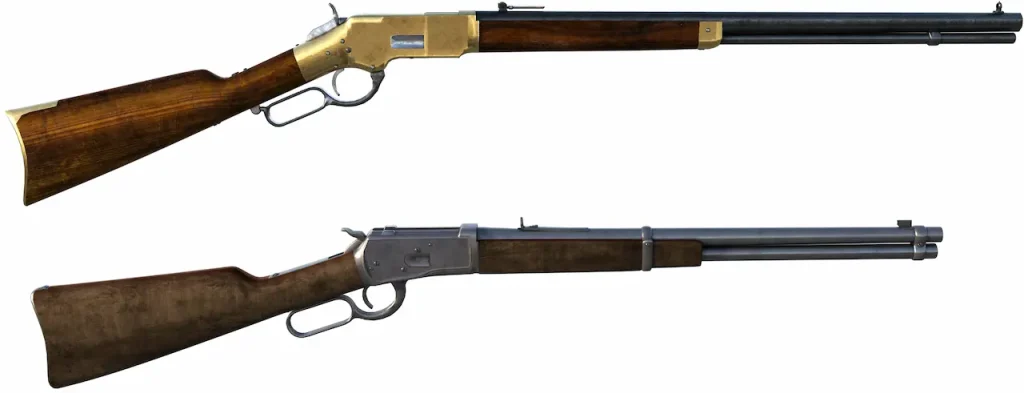
Enjoying this article? Also read: How To Shoot Down And Uphill
Winchester Model 1886
This lever-action rifle was introduced in 1886 and was designed for big game hunting. It was used by hunters and soldiers in both World Wars, and has a reputation for being powerful and dependable. It is still popular among collectors and hunters.
the slick Model 1886 from Uberti provides big-bore lever-gun enthusiasts a new opportunity to own and use an Italian replica of Winchester’s historic hunting rifle.
If you’re not familiar with this gun, Winchester’s lever-action model of 1886 was the first successful rifle to bridge the gap between firepower and authority, effectively pairing high magazine capacity and fast function with authoritative cartridges adequate for potentially dangerous big game. Previously, the great lever guns were limited, for the most part, to revolver-size cartridges, and big-bore cartridges were limited to single-shot rifles. While the 1886 had significantly more recoil than a revolver-caliber lever gun and somewhat less accuracy than a fine single-shot rifle, it did offer unprecedented effectiveness on elk and moose–and even just deer and pronghorns.
Winchester Model 1892
This lever-action rifle was introduced in 1892 and was used by law enforcement, cowboys, and hunters. It has a reputation for being reliable and easy to handle, and was used in many Western movies. It is still popular among collectors and sporting enthusiasts.
It took John Moses Browning less than a month to design the Winchester Model 1892 lever-action rifle, yet it sold in the millions, was renowned all over the world, became a Hollywood favourite, served in war and is still popular today, almost 130 years later.
Winchester’s iconic lever-action rifles are synonymous with the Frontier West era of American history from the 1860s to early 1900s. The Winchester Model 1873 rifle is known as “the gun that won the West”, while their Model 1894 is the most successful commercial centrefire hunting rifle ever produced, with more than 7.5 million manufactured.
The Model 1892 sits between those two iconic models and is equally part of the company’s legend.
The Model 1873 rifle, chambered in .44-40, was for many years the definitive Winchester rifle, but it had a drawback – it was suitable for pistol cartridges, nothing that could handle buffalo, moose, bear, or other dangerous game. The beefier Model 1876 was introduced to fill the gap, and ten years later Browning made his mark on Winchester’s history by creating the Model 1886, which superseded the 1876.
Winchester Model 1873 (The Gun That Won The West)
The ‘1873 was the culmination of a 25-year evolution of the lever-action repeating rifle. It began with Walter Hunt’s Volition Repeating Rifle, which featured a tubular magazine and a complex and relatively fragile linkage system. That rifle’s patent was purchased a year later by Lewis Jennings. Jennings improved the linkage somewhat, producing a few rifles through the firm of Robbins & Lawrence of Windsor, Vt., until 1852. Horace Smith and Daniel Wesson bought the patent from Jennings and acquired Jennings’ shop foreman, Benjamin Tyler Henry, to oversee further improvement and manufacturing, calling their new company the Volcanic Repeating Arms Company.
Introduced in 1873 and known as the “Gun that Won the West.” It was used by cowboys, soldiers, and hunters, and has become an American icon. It is still popular among collectors and historians.
It has been called, “The gun that won the West.” It has also been the title star of a motion picture. Cussed and discussed, this rifle has been the subject matter of countless campfires, hunting camps and saloons. Once praised as being one of the slickest lever-actions, it is equally disdained as a weak rifle incapable of handling cartridges with enough power to knock off a mouse. Nonetheless, the Model 1873 Winchester is an iconic rifle of the American west.
One of the first improvements was Smith’s incorporation of a copper case with a priming compound held within the folded rim of the cartridge to replace the “Rocket Ball” ammunition, which was a Hunt invention. Rocket Ball ammunition held the powder charge within the hollow base of the bullet, and like all forms of so-called “caseless” ammo it has never proven to be reliable or accurate. The cartridge Smith developed became the .22 Short. The rifle and cartridge had limited success, because of the lack of power and reliability of its ammo. Eventually the Volcanic Repeating Arms Company produced a lever-action pistol to go with its rifle.
The largest stockholder in this fledgling firm was a shirt maker from New Haven, Conn., Oliver Fischer Winchester. Wesson left Volcanic in 1856, and Smith followed him eight months later to form the Smith & Wesson Revolver Company. Volcanic was in receivership, and Winchester-who was reputed to have a keen eye for a bargain-bought controlling interest in the company in 1857, renaming it the New Haven Arms Company. Henry remained with Winchester and continued to develop Smith’s cartridge concept on a larger, .44-caliber scale. He redesigned the rifle to handle the powerful ammunition, culminating with the 1860 Henry rifle. The rifle saw a fair amount of service with the Union army during the Civil War.
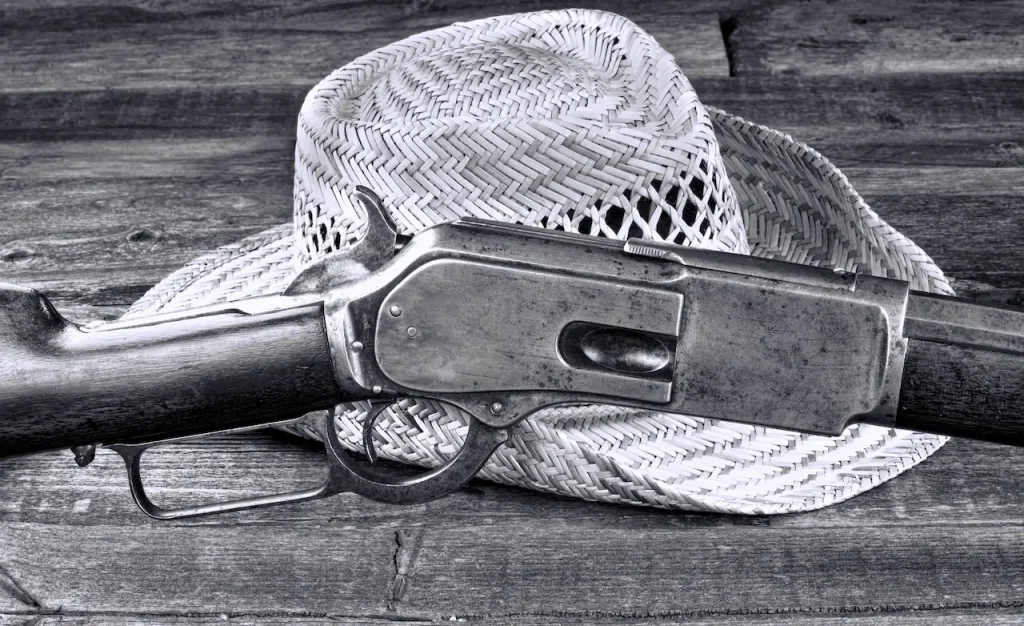
Love the Garand Rifle? Read: M1 GARAND Custom Rifle
Winchester Model 9422
This lever-action rifle was introduced in 1972 and was designed for small game hunting and plinking. It has a reputation for being accurate and reliable, and is still popular among collectors and shooters.
the Winchester Model 9422’s 33-year production run–from 1972 through 2005–the well-built and extremely accurate .22 rimfire lever-action embodied our ongoing admiration for the American West and filled the need for an economical look-alike of its big-bore Model 94 counterpart. It’s unsurprising then that the 9422 became one of the most popular rifles in Winchester’s lineup.
Serial number 1 of Winchester’s 9422 was given to long-time Winchester employee Bill Kelley upon his retirement in 1972, and by 1991 more than 600,000 guns had been produced. The rifle sported a forged receiver and straight-grip walnut stock, a 20 1/2-inch barrel, a semi-buckhorn rear sight and a bead-and-post front sight, and it weighed 6 pounds–a half-pound lighter than the Model 94. Of course, mechanically it was an entirely different gun and featured a tubular magazine that could hold 15 rounds of .22 Long Rifle, 17 rounds of .22 Long or 21 rounds of .22 Short. There was also a 9422M version that held 11 rounds of .22 WMR. A later variation, the Model 9217, was chambered for the .17 HMR.
Its features included a solid-top receiver grooved for scope mounts, angled ejection (even before the Model 94 had it), a hammer with a detachable thumb extension for use with an attached scope, and a much-favored half-cock instead of the 94’s rebounding hammer. In addition, the 9422 had a take-down feature–loosening a screw on the left side of the receiver enabled the rifle to be separated into two parts. Checkering was added in 1980, and an XTR version with high-polish bluing and checkered fancy walnut stocks was produced from 1978 until 1989.
In 1981, Olin licensed the Winchester name and manufacturing to U.S. Repeating Arms Co., which subsequently produced a number of commemoratives, plus large-loop and pistol-grip variations. In 1987, a .22 WMR WinCam version was offered with synthetic stocks, and in 1996 a 16 1/2-inch-barreled Trapper was introduced.
Make sure to always know and understand: Your Gun Laws By State
